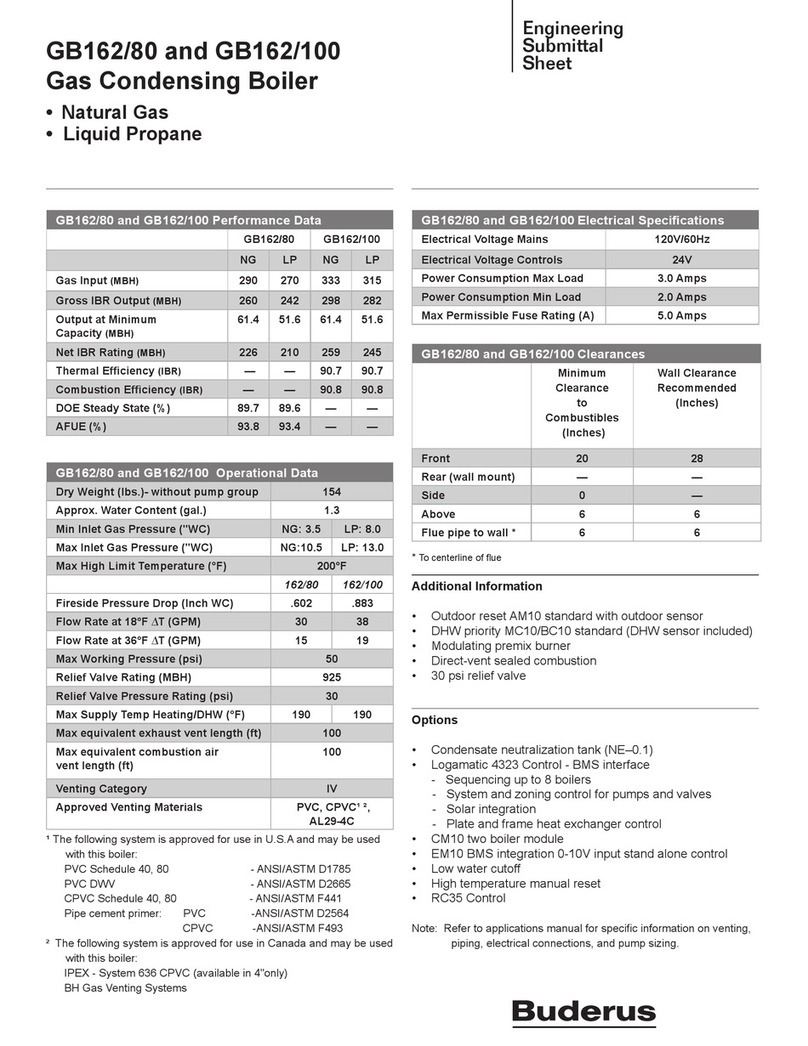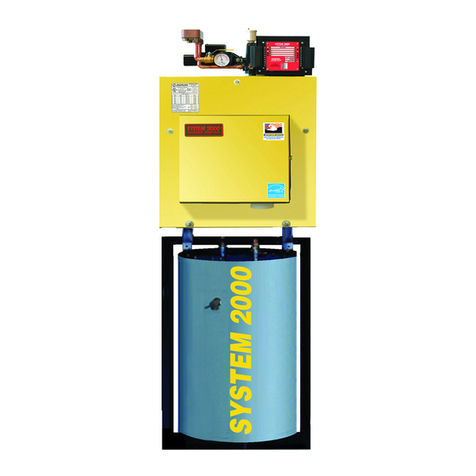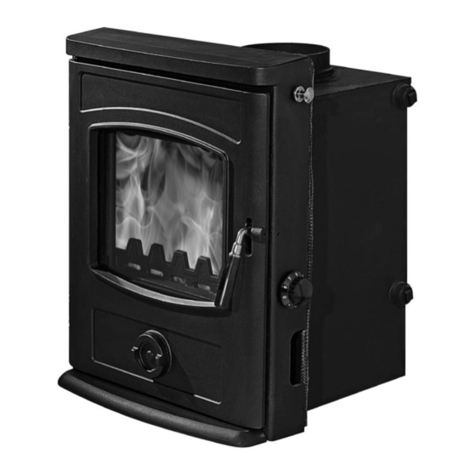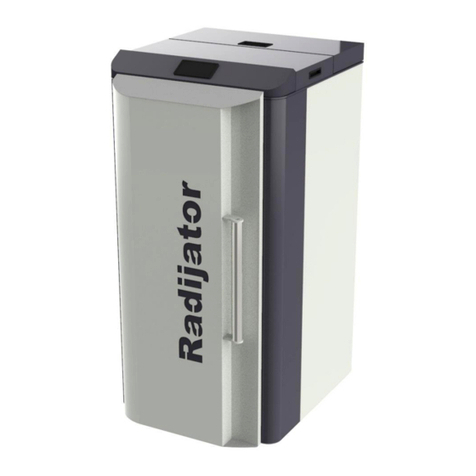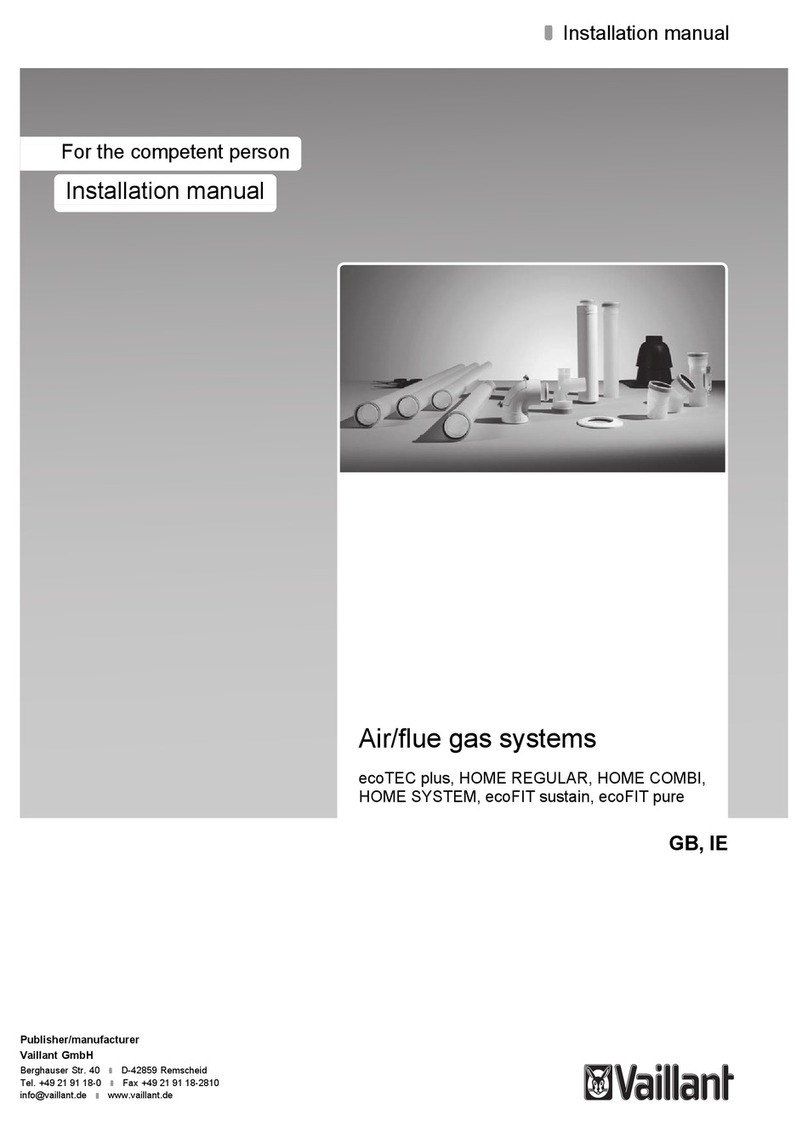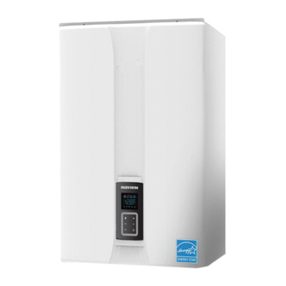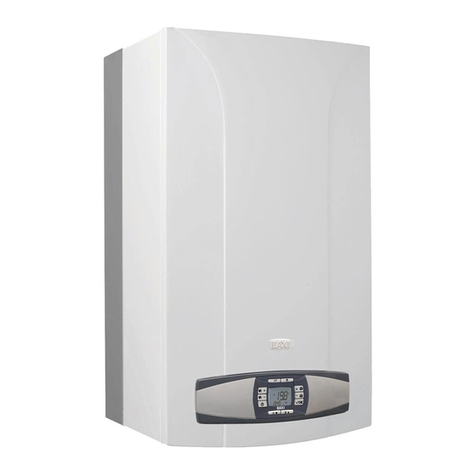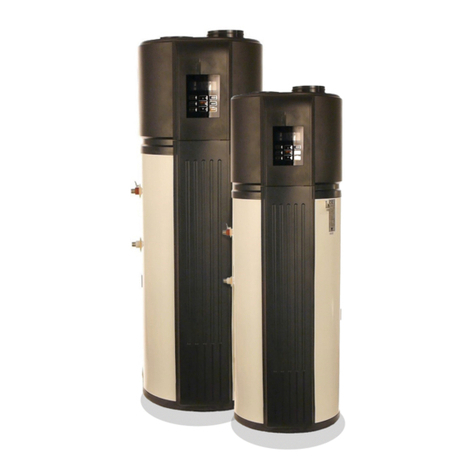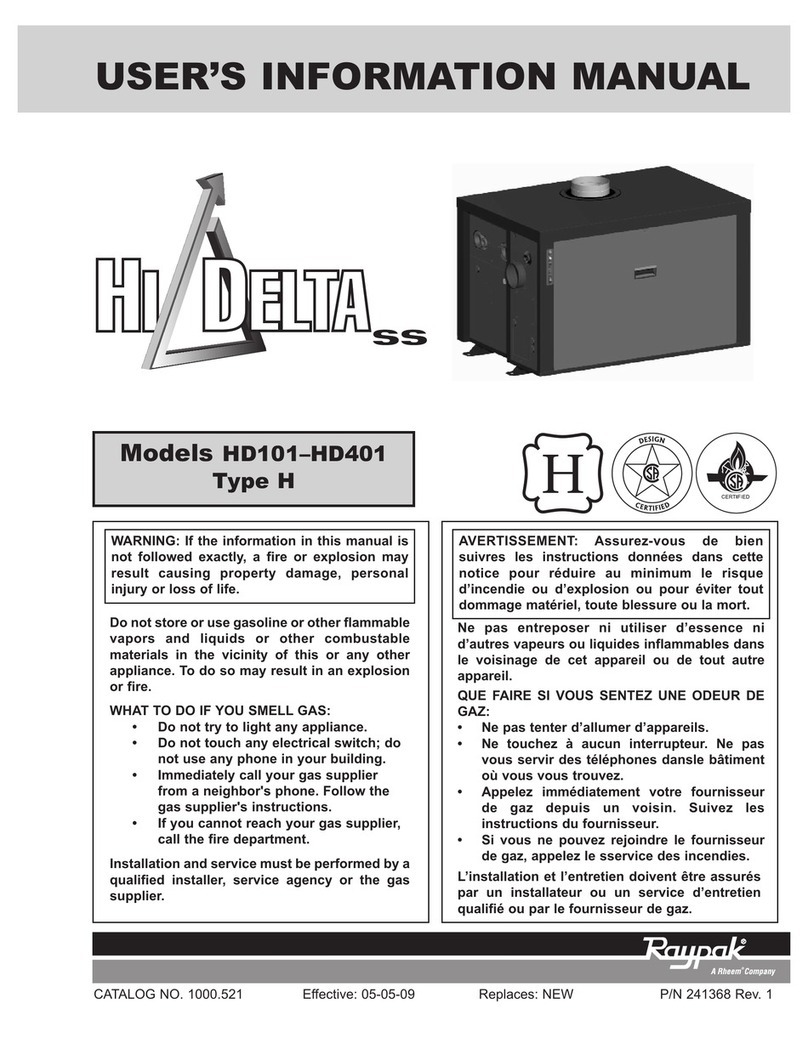7
GB-031C/f.347
INSTALLATION
12. System types
The Fusion Comet range of boilers can be used in various system
designs. Please refer to The Electric Heating Company for more
details on our Fusion Boiler for under floor heating. We are able
to supply a heat pack that contains the relevant control valves,
cylinder and room thermostats required to configure an ‘S’ plan
heating system. The heat pack has all the necessary components
that you need to connect the systems controls and plumbing con-
figurations for ‘S’ Plan design.
We recommend the use of thermostatic radiator valves on all ra-
diators except in the room that has the wall thermostat fitted. This
radiator should be fitted with lock shield valves and left in the
fully open position.
The boiler has an integral automatic bypass valve fitted which
should be set to the relevant settings to allow the minimum flow
rates to pass through the boiler (8 l/min) when all radiator thermo-
stats and ” zone valves are closed.’
Systems should be designed to meet the current building regula-
tions in force at the current time.
13. Hanging the Boiler
1. Hang the boiler in a vertical position on the fixing points and
screws provided, with the flow and return connections to the
bottom of the boiler, maintaining the clearances as per Figure
12 of this manual.
2. Connect the boiler to a heating system that is equipped with
isolation valves (see Figures 4 & 5)
3. Fill the heating system with treated water, which will substan-
tially extend the life of the heating coils. See item 14 ‘System
Protection’ below.
4. Connect the boiler to the ‘mains’ electrical system as per Figures
6, 8, 9 & 11 using conductors sizes as per as specified in the
Technical Specification on page 17 of this document.
5. Connect the room thermostat / Programmer using the two
control conductors marked RP as in Figure 7 & 10.
6. For all other electrical connections refer to the ELECTICAL
CONNECTIONS & CONTROL section of this manual.
14. System protection
Failure to protect the system will invalidate the manufacturer’s
warranty.
After the system has been installed the cleansing and inhibiting
procedure must be carried out as follows:
Procedure:
1. Fill the system with cold mains water to the recommended
pressure 1.5 bar and check for leaks, then drain the system
thoroughly making sure all drain cocks are fully open and that
the system is completely drained.
2. Add Fernox Heavy Duty restorer through the header tank or
via filling loop at the recommended dose. One bottle must be
used as a minimum per dwelling. If you are unsure of the cor-
rect dose rate, contact Fernox.
3. Re-fill the system and circulate the Heavy-Duty Restorer prior
to the boiler being fired up, then commission the system in
the normal way. The cleansing agent must be in the system
for a minimum 1 hour with the system at normal operating
temperature. A longer period of time would be more beneficial
to the cleansing process especially if excess flux was used.
4. Drain and flush the system thoroughly to remove the cleaning
agent and any debris or contaminant. This is a critical part of
the cleaning process and must be carried out correctly. Use a
rinse test meter (TDS), such as the Fernox CTM. The reading
must be within 10% of the mains ppm value.
5. Then add the Fernox Protector (Copal MB1 or Super concen-
trate). This will protect against the formation of scale, corrosion
and microbiological growths. It is crucial however, that for
the protector to work correctly, the system must be properly
cleansed and flushed.
6. The label included within the Fernox Protector carton should
be completed and attached adjacent to the boiler.
7. We recommend inhibitor levels are checked on an annual basis
(usually during the service) or sooner if the system content is
lost. This should be carried out using a Fernox inhibitor Test
Kit.
8. Fernox Technical Service Helpline on 0870 870 0362 for further
assistance
15. Start-up / Commissioning
1. Turn ‘mains’ power on at main Isolating Switch
2. Make sure that all external controls are not calling for heat at
this stage.
3. Switch the boiler on by pressing the button)
4. Check to see that the correct installation water pressure is ap-
prox (1.0/1.5 bar) by pressing the right arrow key and correct
as necessary. If the A indicator flickers the pressure is too low.
5. Vent the Pump in the following way:
• Make sure the system is pressurized to the correct pressure
• Carefully undo the venting screw (see figure 2)
• Vent until you see running water and all air from the boiler has
been released
• You may need to repeat this process
• Check the system pressure and top up if required
• Re tighten the vent screw
6. Turn on external controls to call for heat.
7. Set the temperature of the boiler to your desired temperature
(normally 650C).
Vent Screw





















